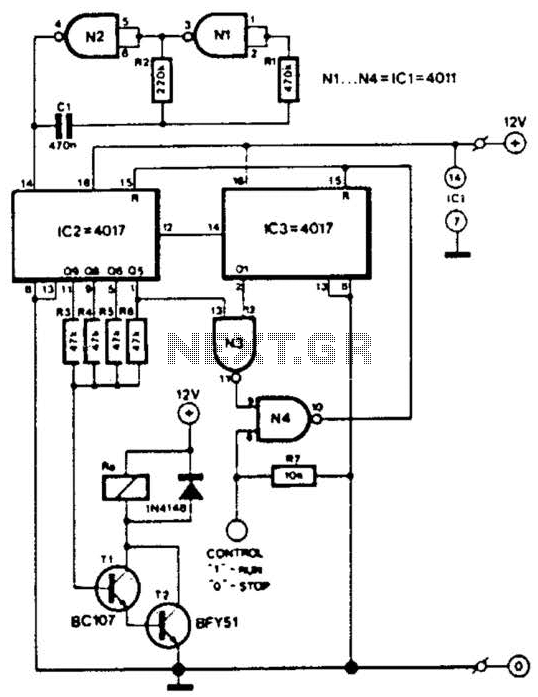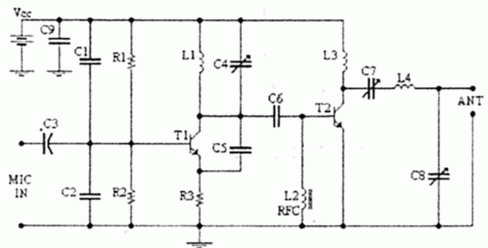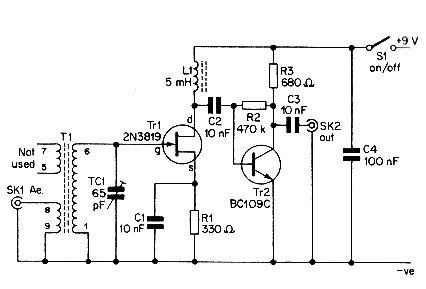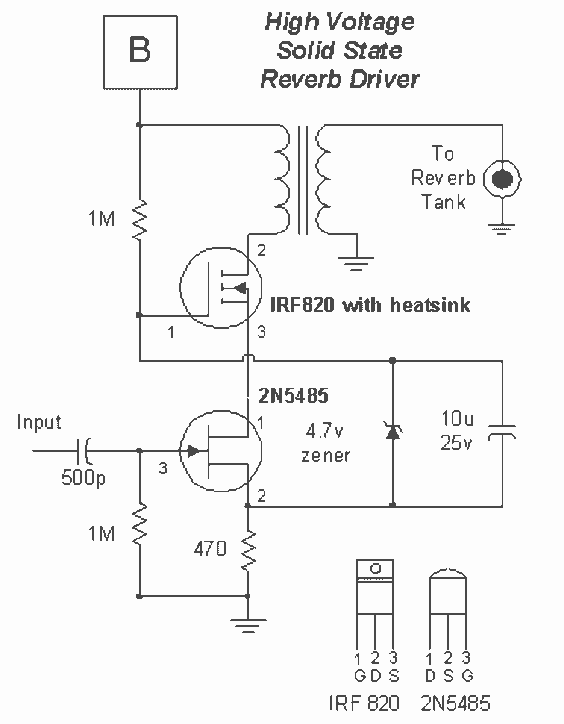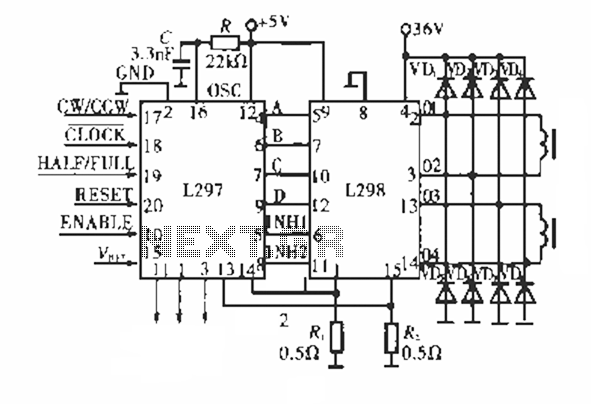
Radio Collar Transmitter Circuit using NE 555 IC
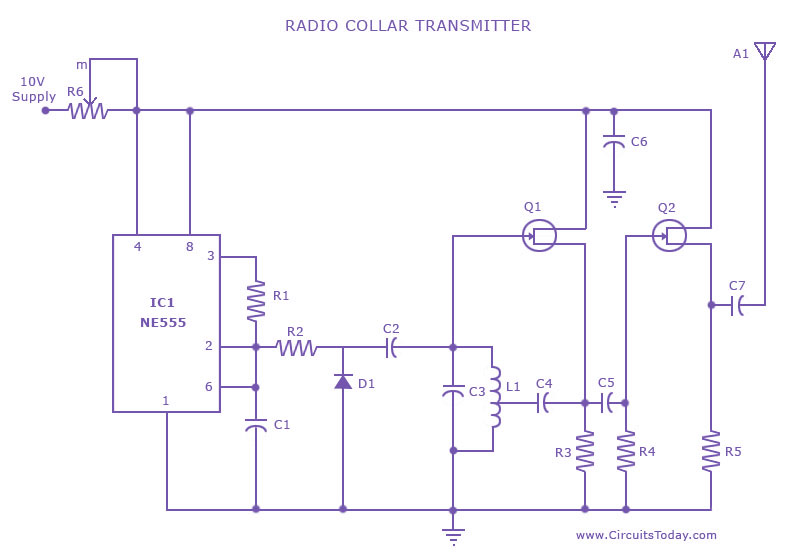
This is a radio transmitter circuit diagram designed for integration into radio collars using the NE 555 integrated circuit. The circuit transmits a pulse in the FM band, specifically between 88 MHz and 105 MHz.
The radio transmitter circuit utilizes the NE 555 timer IC, which is configured in astable mode to generate a continuous square wave signal. This signal is then modulated to produce frequency modulation (FM) suitable for transmission in the designated frequency range. The circuit typically includes essential components such as resistors, capacitors, and an antenna for efficient signal broadcasting.
In the circuit, the NE 555 timer's frequency output can be adjusted through the selection of resistor and capacitor values, allowing for fine-tuning of the transmission frequency within the FM band. The output from the NE 555 is coupled to a transistor amplifier stage that boosts the signal strength before it is fed to the antenna. This amplification is crucial for ensuring that the signal can be transmitted over a longer distance without significant loss.
The antenna design is also a critical aspect of the circuit, as it must be appropriately sized and configured to match the operating frequency, optimizing the radiation pattern and ensuring efficient transmission. Additionally, power supply considerations are important; the circuit may require a regulated DC voltage source to ensure stable operation of the NE 555 and associated components.
Overall, this radio transmitter circuit is well-suited for applications in which compactness and efficiency are required, such as in radio collars for tracking or communication purposes. Proper implementation of the design will yield reliable performance within the specified frequency range, making it an effective solution for FM transmission needs.This is a radio transmitter circuit diagram suitable for fitting on radio collars using NE 555 IC. he circuit transmits a pulse in the FM between band 88MHz to 105Mhz.. 🔗 External reference
The radio transmitter circuit utilizes the NE 555 timer IC, which is configured in astable mode to generate a continuous square wave signal. This signal is then modulated to produce frequency modulation (FM) suitable for transmission in the designated frequency range. The circuit typically includes essential components such as resistors, capacitors, and an antenna for efficient signal broadcasting.
In the circuit, the NE 555 timer's frequency output can be adjusted through the selection of resistor and capacitor values, allowing for fine-tuning of the transmission frequency within the FM band. The output from the NE 555 is coupled to a transistor amplifier stage that boosts the signal strength before it is fed to the antenna. This amplification is crucial for ensuring that the signal can be transmitted over a longer distance without significant loss.
The antenna design is also a critical aspect of the circuit, as it must be appropriately sized and configured to match the operating frequency, optimizing the radiation pattern and ensuring efficient transmission. Additionally, power supply considerations are important; the circuit may require a regulated DC voltage source to ensure stable operation of the NE 555 and associated components.
Overall, this radio transmitter circuit is well-suited for applications in which compactness and efficiency are required, such as in radio collars for tracking or communication purposes. Proper implementation of the design will yield reliable performance within the specified frequency range, making it an effective solution for FM transmission needs.This is a radio transmitter circuit diagram suitable for fitting on radio collars using NE 555 IC. he circuit transmits a pulse in the FM between band 88MHz to 105Mhz.. 🔗 External reference
